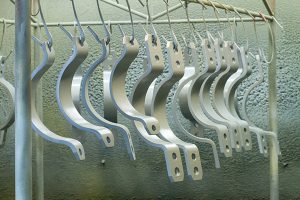Two strategies for designing coatings with exceptional mar resistance

There are two strategies are available for designing coatings with exceptional mar resistance.
- They can be made hard enough that the marring object does not penetrate far into the surface; or
- They can be made elastic enough to recover after the marring stress is removed.
If the hardness strategy is chosen, the coating must have a minimum hardness. However, such coatings may fail by fracture. Film flexibility is an important factor influencing fracture resistance. Use of 4-hydroxybutyl acrylate instead of 2-hydroxyethyl acrylate in an acrylic resin crosslinked with MF resin gave improved results, as did use of a polyol-modified hexamethylene diisocyanate isocyanurate instead of isophorone diisocyanate isocyanurate in crosslinking polyurethane coating. Courter proposes that maximum mar resistance will be obtained with coatings having as high a yield stress as possible without being brittle. In this way, high yield stress minimizes plastic flow, and avoidance of brittleness thereby minimizes fracture.
A further problem related to mar resistance is metal marking. When a metal edge is rubbed across a coating, a black line is sometimes left on the coating where metal has rubbed onto the coating’s surface. Metal marking usually occurs with relatively hard coatings. The problem can be reduced or eliminated by reducing the surface tension of the coating, so the coefficient of friction is low and the metal slips over the surface.

Comments are Closed